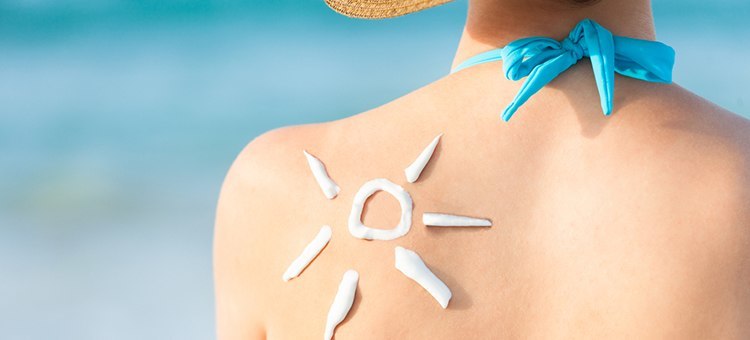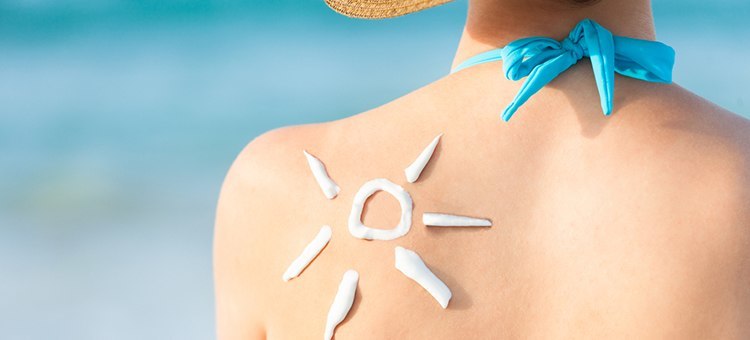Photosensitivity is caused by ingesting, inhaling or coming into skin contact with photosensitisers – substances that cause photosensitivity. Photosensitisers include industrial chemicals, drugs, plants and some essential oils and fragrances. Some medications can cause photosensitivity.

Sunlight contains both ordinary visible light and shorter invisible light rays called ultraviolet radiation (UVR). UVR can produce tanning but also causes burning and skin cancer. UVR is divided into UVB (short wavelength rays that cause sunburn and tan) and UVA (longer wavelength tanning rays). Patients can be sensitive to one kind of sunlight (i.e. only to UVB, UVA or visible light) or to a wider range of radiation. The most common photosensitivity is to UVA.
A drug, food, or chemical that increases photosensitivity of the organism is referred to as a photosensitizer . This may be an adverse effect of many drugs, or a desired effect in photodynamic therapy of tumors. In photochemistry, a photosensitizer is a chemical compound that readily undergoes photoexcitation and then transfers its energy to other molecules, thus making the reaction mixture more sensitive to light.
There are certain drugs and food groups that do not mix well with ultraviolet light either in natural or artificial source. Below is a list of drugs, foods, and other substances which could make your skin super-sensitive to ultraviolet light.
- Vegetables: Carrots (wild), Celery, parsley, parsnips, etc.
- Fruits: citrus fruits.
- Essential Oils: Cedar, citron, lavender, lime, sandalwood, Vanillin oil.
- Herbs: Agrimonia, Angelica, dill, fennel, meadow grass, water ash, Yarrow.
- Medication: Antibiotics, Nonsteroidal anti-inflammatory drugs (NSAIDs), Diuretics, Retinoid, Hypoglycaemics, Neuroleptics (anticonvulsants), PDT Pro-photosensitisers, Other drugs. For more input, click here.
- Sunscreen: Based on their mechanism of action, topical sunscreens can be broadly classified into two groups, chemical absorbers and physical blockers. Chemical absorbers work by absorbing ultraviolet (UV) radiation and can be further differentiated by the type of radiation they absorb, UVA or UVB, or both UVA and UVB. Physical blockers work by reflecting or scattering the UV radiation. Some chemical absorbers may degrade when exposed to sunlight, i.e.: photo-unstable; and therefore may not perform as well as expected. Often these chemicals are mixed with other agents that enhance the stability of the overall sunscreen product. Octocrylene and bemotrizinol are often incorporated with other chemical absorbers because they are photostable and prevent the formulation from breaking down when exposed to the sun. e.g. Benzophenones, Para-aminobenzoic acid (PABA), Cinnamates, Salicylates.
- Fragrances: Musk,6-methylcoumarin. Only a small number of fragrances are actually common sensitisers and cause allergy in sensitive individuals. Paints, cutting fluids and metal working fluids may contain fragrances to mask offending odours. Fragrances may also be circulated through air conditioning.
How to Check Photosensitivity?
Photosensitivity can be confirmed by phototests – artificial light from various different sources is shone on small areas of the skin to see whether the rash can be reproduced, or if sunburn occurs more easily than expected. Photosensitivity induced by contact with certain items can be tested by photopatch tests.
The Global Solar UV Index
The UV index (UVI) is the international standard for UV measurement, developed by WHO, the United Nations Environment Program and the World Meteorological Organization. It is designed to indicate the potential for adverse health effects and to encourage people to protect themselves. The higher the UVI value, the greater the potential for damage to the skin and eye, and the less time it takes for harm to occur. Sun protection should be used when the UV index reaches 3 or above.
The Global UV Index, from low (green) to extreme (purple)
WHO encourages the media and the tourism industry to publish UVI forecasts and promote sun protection messages.
For more input:
